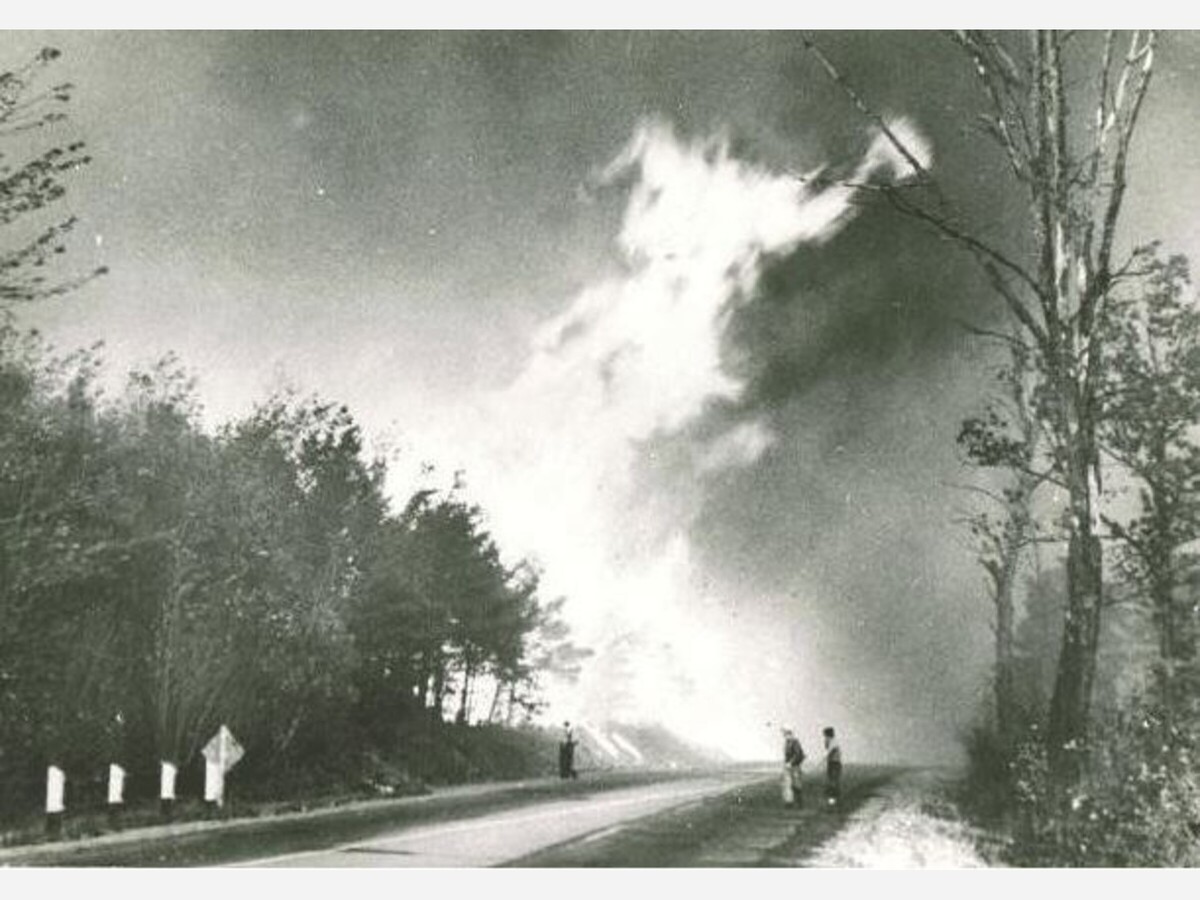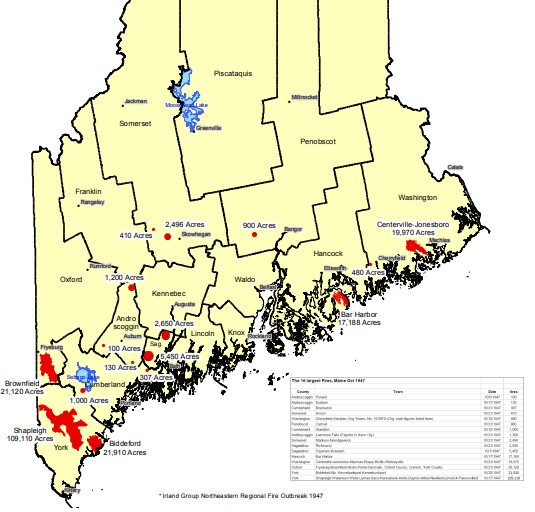Image

Wildfires are most often associated with California and the West, but such catastrophes have happened in New England, too.
In 1947, the State of Maine suffered its largest forest fire disaster in modern history. According to an article posted by the Main Forest Service, the state experienced over 90 consecutive days of record breaking high temperatures and drought. By mid-October, many small wildfires started and spread out of control. Statewide, these fires burned over 220,000 acres [roughly equal to half the area of Rhode Island], burned 1000 homes, left 2,500 people homeless and 16 people dead. The damages totaled over 11 million dollars at that time. The map below indicates the major fires of October 1947.

Wikipedia continues the story:
After a wet spring, in which the months of April, May and June were inundated with rainy weather, the climate turned to drought conditions in July, 1947. By the end of September, the ground was extremely dry. State and local officials, recognizing the dangers of the dry conditions, began implementing preventive measures such as informing the public to have their chimneys cleaned. By the second week of October, the state was in a Class 4 state of danger, meaning: "high state of inflammability." The State Forest Service reopened fire watch towers normally closed at the end of September.
Reports of small fires in woods began coming into the Forest Service on October 7. These early fires burned in Portland, Bowdoin and Wells. Being 30 miles (48 km) apart from each other, these three fires illustrated the danger. After this, reports of fires poured in, and by October 16, 20 separate fires were burning in the state. By October 19, many communities in Maine breathed air filled with a smoky haze and the smell of burning wood.
York County
Hardest hit was northern York County, the southernmost county in the state. Fires began in the towns of Shapleigh and Waterboro, destroying both communities, including, with only a few exceptions, most homes. The fires swept through the forests and moved with the wind toward the ocean. In addition to Waterboro and Shapleigh, the towns of Alfred; Lyman; Newfield; Kennebunk; Kennebunkport; North Kennebunkport (now Arundel); Dayton; Wells; and the cities of Biddeford and Saco were devastated by fire. With the exception of Shapleigh and Waterboro, most town centers were saved through the tireless work of firefighters, most notably Goodwins Mills in the eastern corner of Lyman, where due in part to a change in wind direction, only the center was saved, and all of the acreage around it burned to the ground.
Restoration
After the fire, bulldozers were brought in to clear the debris and standing chimneys where homes once stood. It took a decade for many to fully recover their losses.
Modern evidence of the Great Fires
Even today evidence exists of the Great Fires that swept through York County. In Waterboro, Shapleigh and Lyman, where the devastation was great, forests of small, undesirable pine trees grow en masse where great forests stood before the fires. One would notice on visits to these communities that homes within them lack historical significance; the oldest were built in the late 1940s. Most historic farms and homes built before 1947 in these communities were destroyed.
* * * *
Of course, modern firefighting capabilities are much improved but in Massachusetts, the area covered by wood and scrub have increased dramatically.